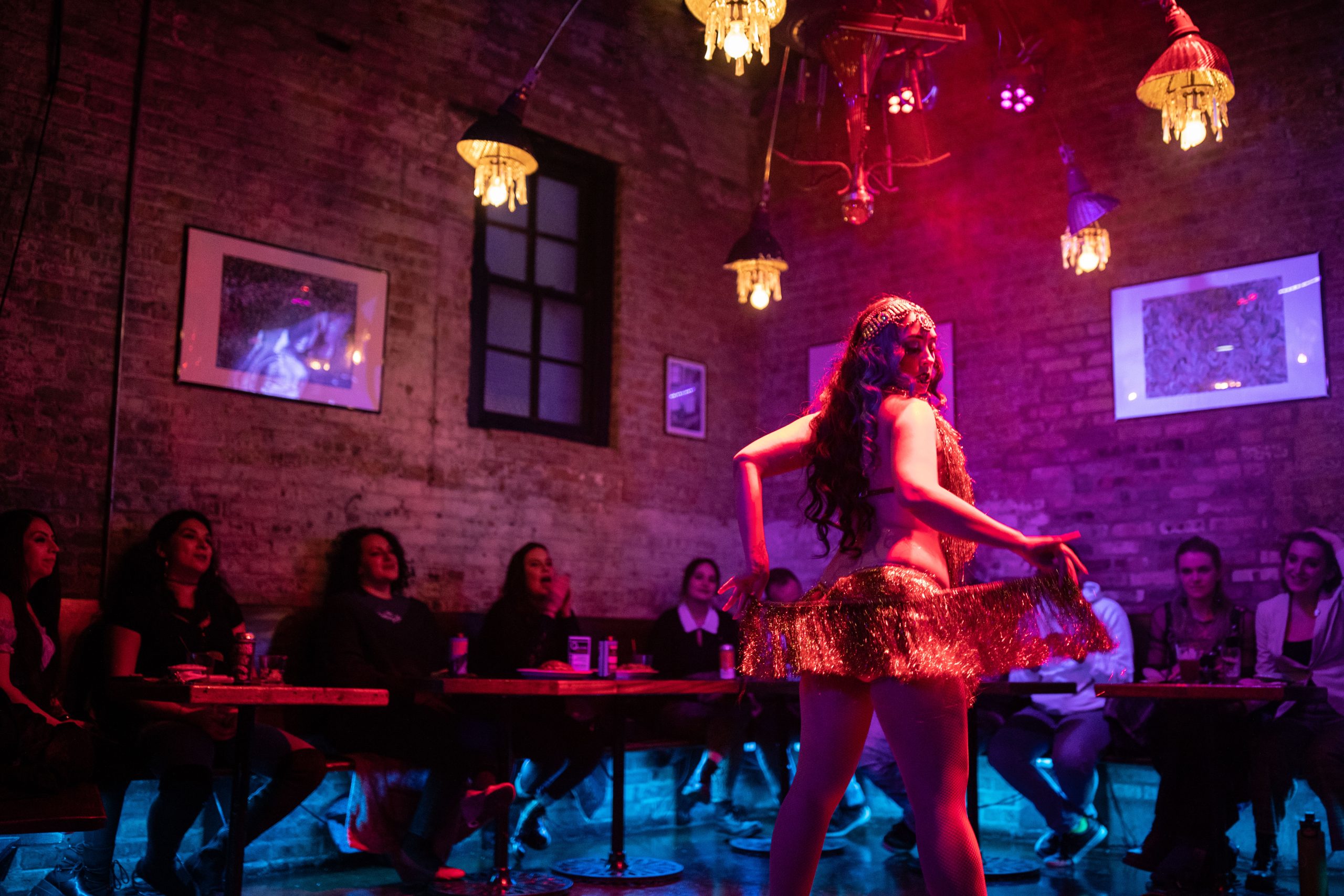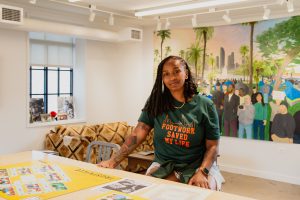THE FIRST REVEAL…
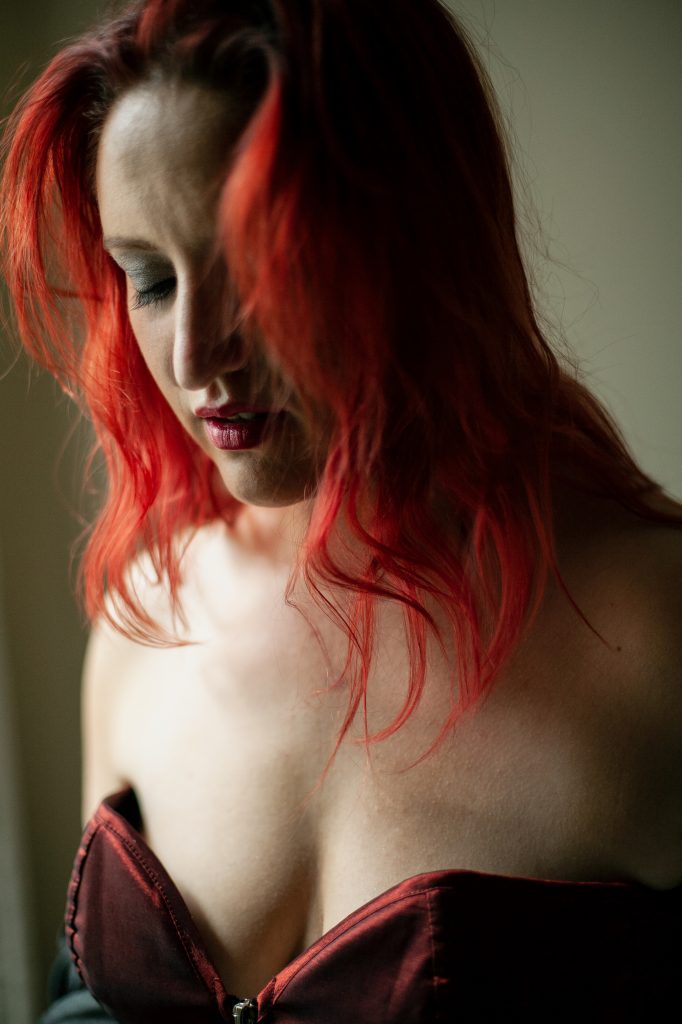
Beginning in my childhood, set in rural central Ohio, I developed a lifelong fascination with glamorous icons. When I trace the origins of these obsessions, I recall fond childhood memories of collecting Marilyn Monroe Barbies, postcards, and calendars after seeing Ashley Judd’s portrayal of her in “Norma Jean & Marilyn” (1996). Living in a small town, without easy access to galleries, museums, or theaters, I watched TV, rented movies, and read my dad’s music magazines to explore creative curiosities. Eventually, Monroe’s iconic image plastered the walls of my childhood bedroom that I shared with my older sister, Shannon, patching areas of peeling wallpaper. Later in my pre-teens, I similarly adored Madonna’s provocative music videos and live performances. I was infatuated with depictions of these unapologetic, fabulous women. I aspired to one day author my own body and proudly flaunt my sexuality in the ways that they did. Their larger-than-life personas transported me to a vibrant, exciting place of possibility.
Fast forward to adulthood in Chicago, while managing a Starbucks café (my role from 2014-2018), I hired and soon befriended a barista named David Alejandro, who introduced me to his then-partner-now-wife, Kitty Tornado, a budding local burlesque performer. David and Kitty were also Midwest transplants, having just moved from Michigan. Kitty was trying to make friends in a new place, and we instantly bonded over similar tastes in music, art, and fashion.

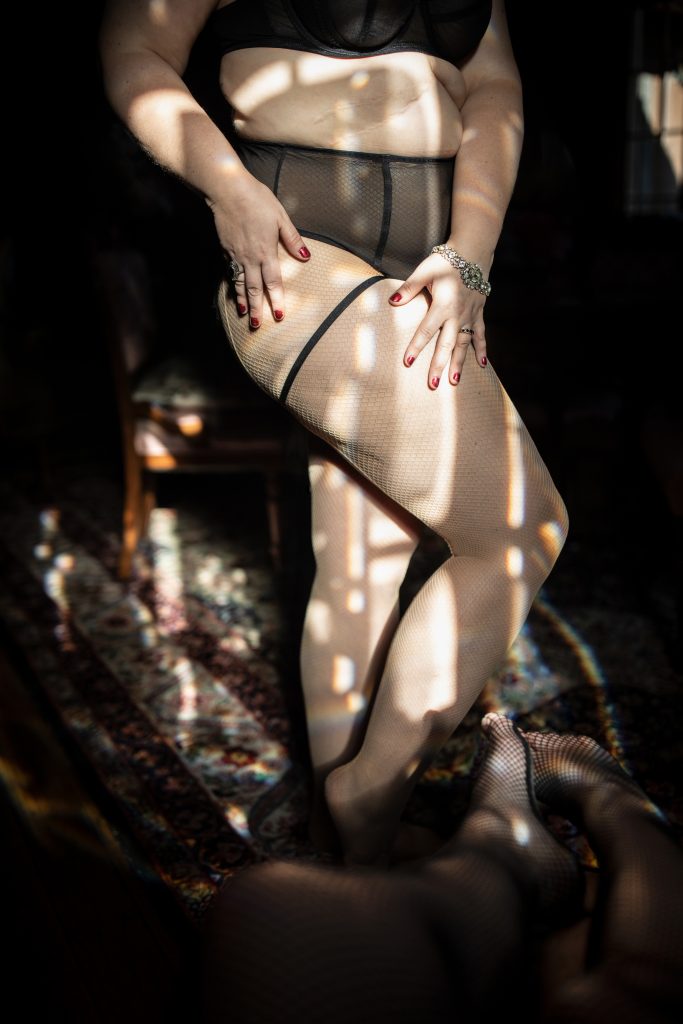
As an image-maker, I immediately saw an opportunity to create portraits of Kitty. In 2016, as we became closer friends, Kitty began bringing her stage looks over to my place to make portraits in the waning sunlight, against the bare beige backdrop of my apartment walls. These images have served as the bedrock for 95% of my overall work since: incomplete and ongoing collections of fellow unapologetic, fabulous people who have claimed significant space in my life, and always inspire, like Kitty. I frame my visual work by first introducing her as my most constant muse and collaborator. Even though my day jobs from 2010-2019 were in the service industry, in my stolen moments, I made art with Kitty.
In January 2017, I finally attended one of Kitty’s shows—my first-ever experience witnessing striptease. As Donald Trump had just taken presidential office, the performances, though only a few were overtly political, deeply resonated with me as I pondered the tenuous future of women’s rights. That evening, for myriad reasons, I convinced myself that I too needed to find my spotlight, and I chose Chicago burlesque as my vehicle. While I likely would never reach the status of Monroe or Madonna, I figured that by learning how to strip, I could be a legend.
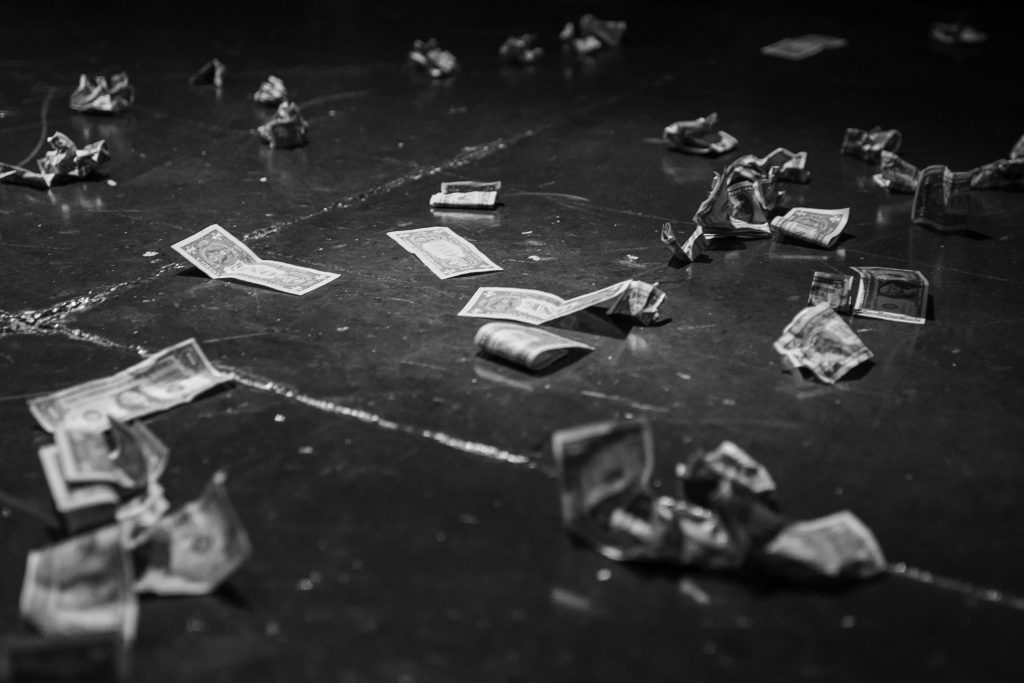
BURLESQUE IN CHICAGO
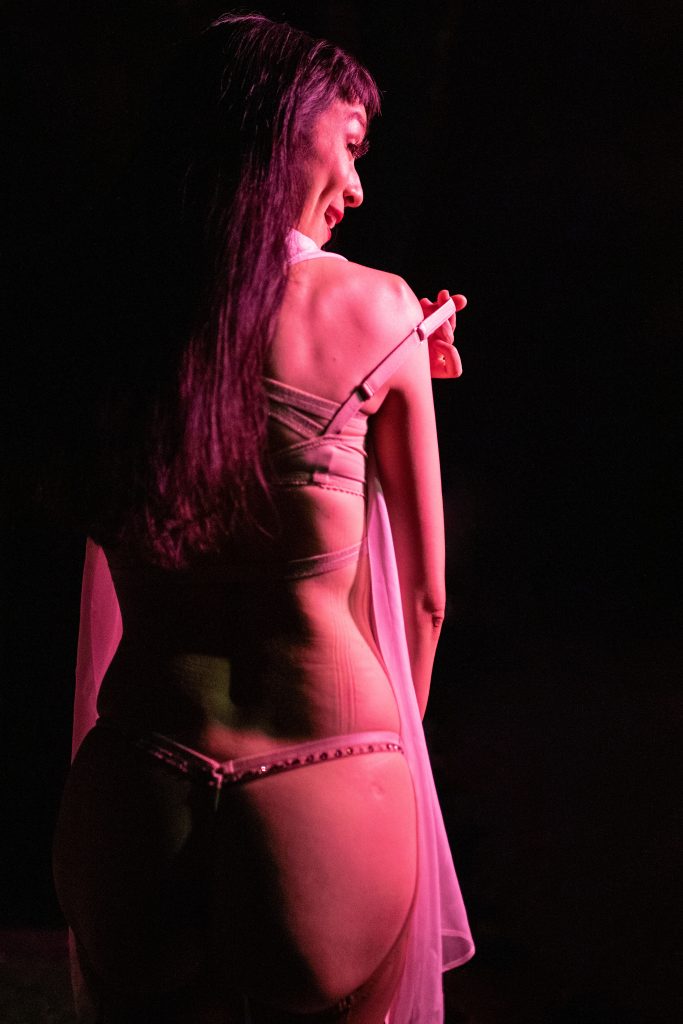
Although still very much a fringe artform wherever it is found, burlesque has had a home in Chicago for over a hundred years. The city has a long history of prominent performers, theaters, and venues. Fahreda Mazar Spyropoulos, aka “Fatima” and later “Little Egypt,” born in Syria in 1871, performed at the 1893 World’s Columbian Exposition in Chicago. In complete defiance of standard women’s dress at the time (full skirts, corsets, and hair-covering hats), Spyropoulos appeared on stage in a gauze shirt, vest, and an ankle-length skirt. She then proceeded to perform a dance then referred to as the “hoochie-coochie”—better known today as the “belly dance.” Soon after, erotic dancing became a popular form of entertainment in select clubs and theaters.
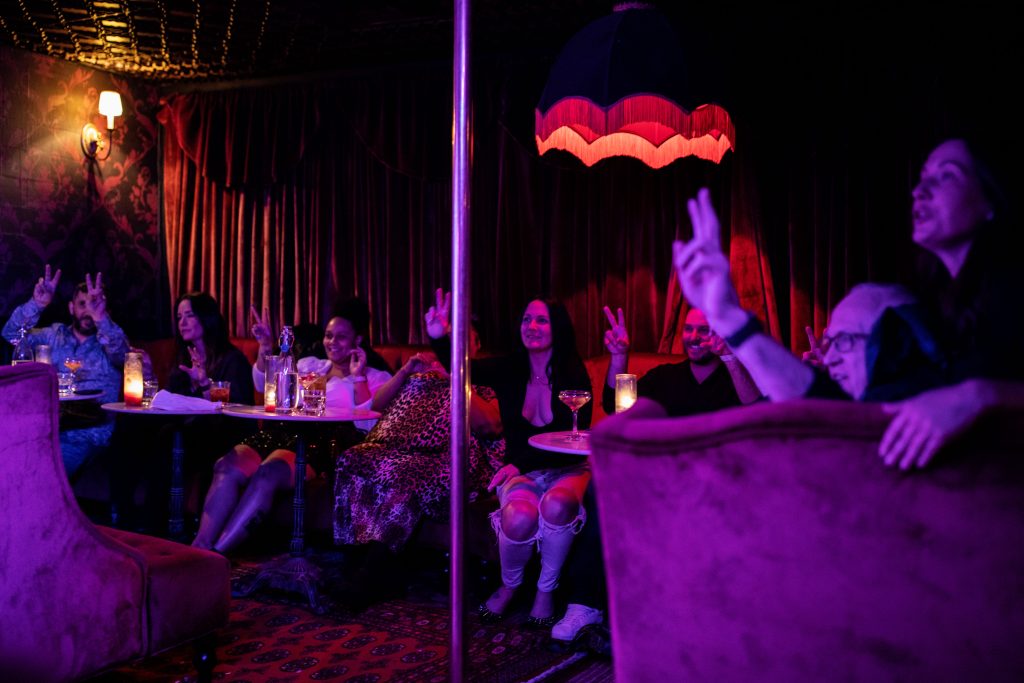
Burlesque arrived on American stages as a populist blend of satire and adult entertainment featuring striptease and broad comedy acts. Until 1890, it gained considerable popularity, developing into a definite form of entertainment. Most of the burlesque show casts between 1870 and 1880 were entirely composed of women.
In the early 1900s, most of Chicago’s burlesque theaters were located around the periphery of the central business district, where the combination of lower land prices and proximity to large populations of bachelors, businessmen, and out-of-town visitors created ideal investment opportunities. One cluster of theaters lined South State Street between Van Buren and Polk Streets. Another developed along West Madison Street near Halsted. A third could be found in the Levee nightclub district near 22nd and South State Streets.
RECLAMATION & RELEVANCE
Burlesque oscillated in popularity throughout the decades as society’s attitudes toward sex relaxed during the 1960s and 1970s. Sex lost much of its earlier mystique and humor, and burlesque audiences dwindled as men availed themselves of more accessible and cheap forms of sexual entertainment, like adult magazines and films.
However, since the 1990s and the emergence of Neo-Burlesque, there has been an explosion of interest in the art form, with many new performers entering the field each year, and hundreds of festivals, showcases, and productions held throughout the world. The Neo-Burlesque movement seeks to restore a sense of glamor, theatricality, and humor to striptease, toting a playful brand of pro-sex, often gender-bending feminism with performances that engage, rather than simply display for, the audience.
In every genre, burlesque often comments about, or considers, the times—a light irreverence to the status quo. Through reveals and through bodies unafraid of taking up space for their own sake, performers explore masquerade and sexual freedom. Today’s world of burlesque bends society’s norms while honoring personal empowerment, gender liberation, and DIY culture.
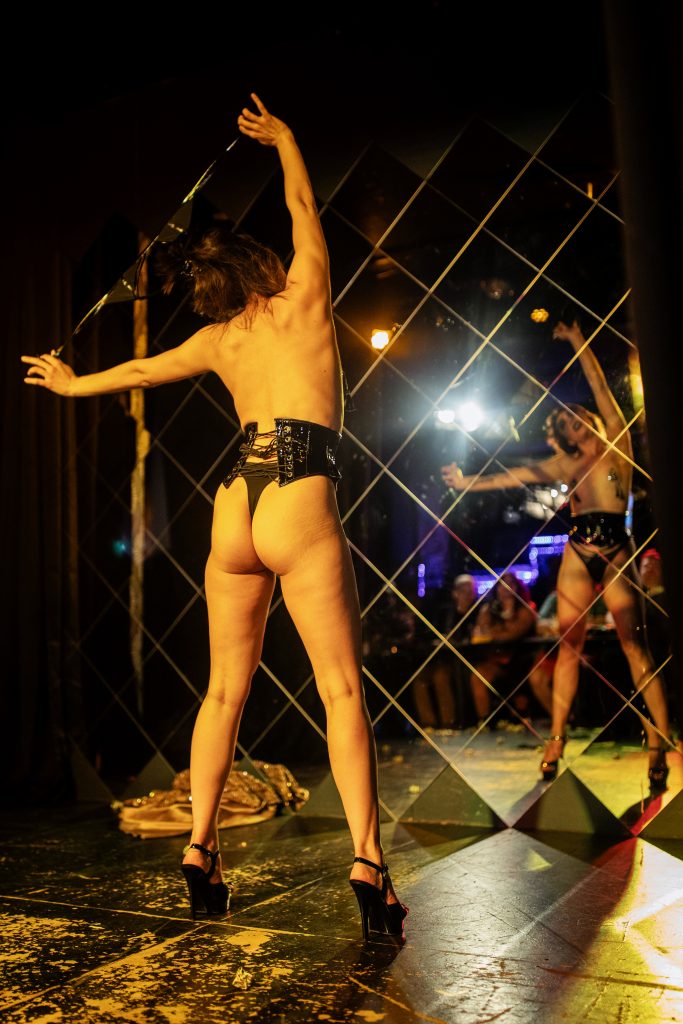
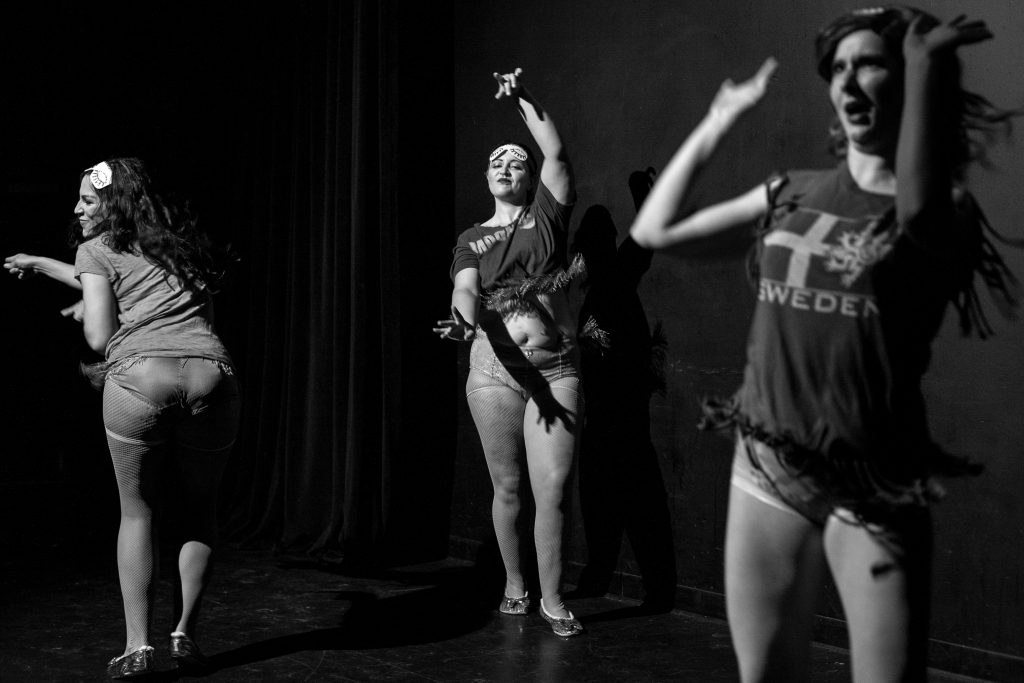
Living in a time in which we understand gender and sexuality as fluid social constructs and civil rights are being fought for, burlesque and its history are more pertinent than ever. Ever since I got my foot in the door of local burlesque as first a photographer, then as a fan, and finally as a performer and producer, I have worked to convey the significance and power of striptease in society and culture.
SHARING IS CARING
Prior to taking my first burlesque class, I did not have a theater, performance, or dance background, but the desire to excel so that I could take the stage one day drove me to take at least a dozen classes in the span of a year. I signed up for my first class as a 30th birthday present to myself—an act of self-love, because I spent most of my twenties working 60-hour weeks, managing cafes and crying about oblivious boyfriends. I was ready for something daring and dazzling like burlesque to transform how I saw myself. Once I started taking classes and chatting with other students and performers, I realized several of my peers had similar reasons for pursuing burlesque. We all wanted something special, just for us.
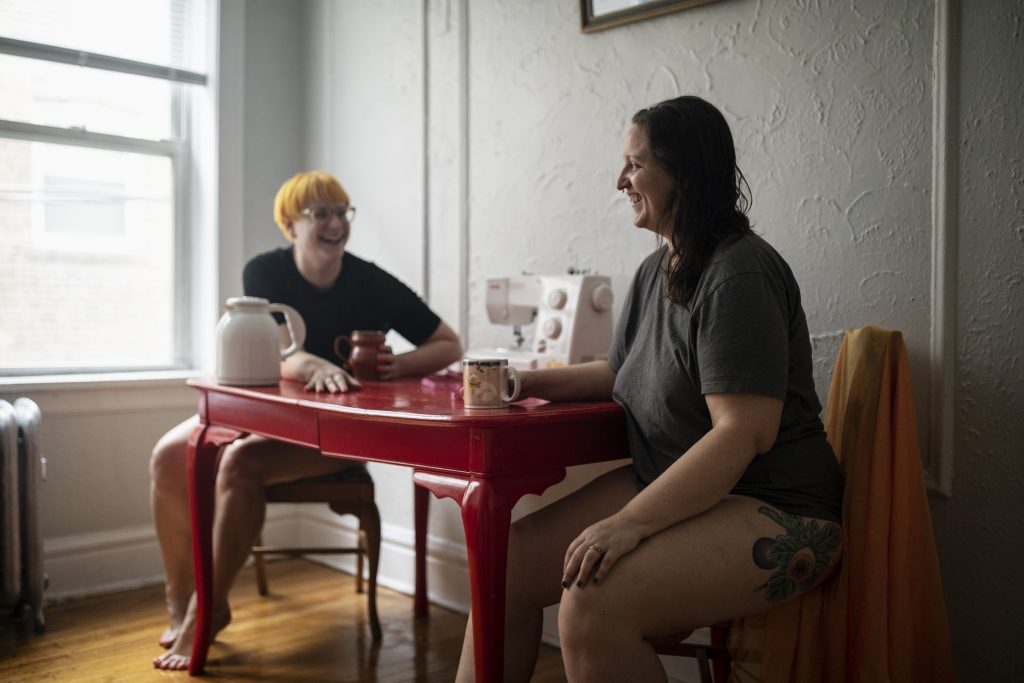
To say that learning and eventually performing burlesque changed my life is an understatement. If this were a late night ad for some miracle anti-aging cream and I was giving a product testimonial, I might say something like, “After two classes, I noticed more body confidence and increased physical energy. After six classes, my sexual prowess soared. Pretty soon I didn’t even recognize the old me! Friends can’t get over my radiance, and I owe it all to burlesque!”
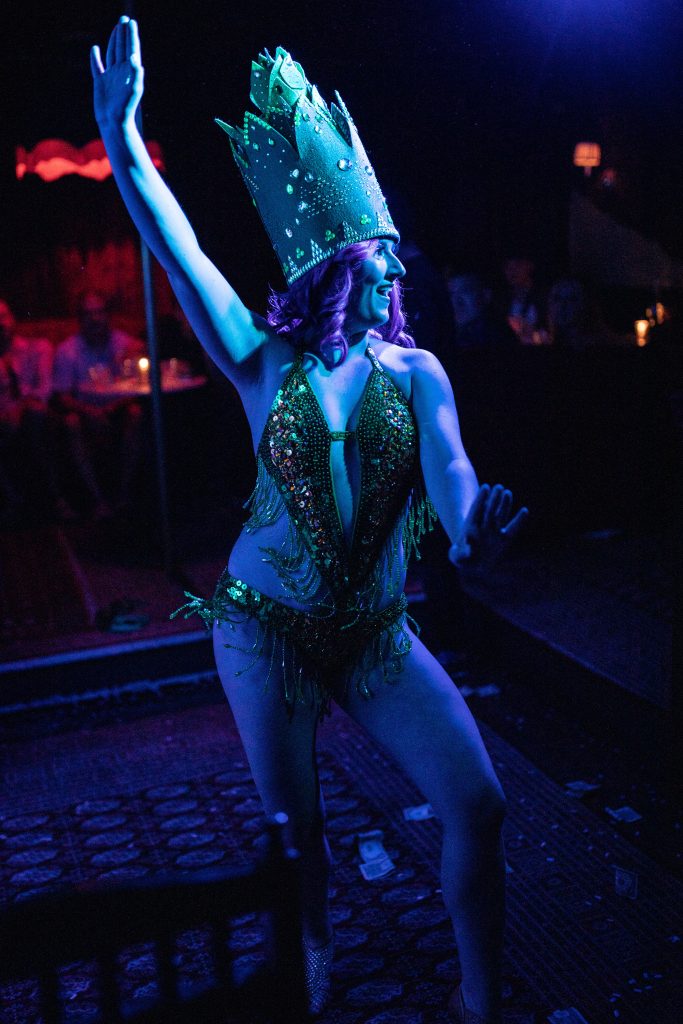
Beginning in 2017, my ties to the burlesque community became even deeper. Every Saturday night for three years, I performed as part of a local ensemble until venues closed in 2020 in the wake of COVID-19. Though said ensemble is now-defunct, I cherished those formative memories of a strong, femme community and friendships unlike others I had experienced. On nights that I was a nervous wreck, I would find immediate relief backstage, giggling and taking selfies with the other showgirls in our sparkles and sequins. And again, after each show wrapped, still in my false lashes and fishnets, I would join them for beers down the street, replaying the highs and dissecting the lows of the evening. After depleting work weeks, Saturday nights were my landing strip.
The resounding support of the community and the shining stars within it became the crux of my inspiration once venues started reopening in 2021. With graduate school on my mind and the goal of an MFA in Photography, I slowly expanded upon my images of Kitty that I had been making for several years to include more members of the community.
Fellow ensemble member, Secret Mermaid, was the first person I befriended more closely and began photographing. Secret is also a nude model, gogo dancer, and sex worker, and she “mentored” me into selling content on OnlyFans when the pandemic forced many creatives to reroute how they made money. Like Kitty, making photographs of Secret felt natural and symbiotic. And like Kitty, my relationship with Secret evolved as the pictures accumulated.
While “sex work” is not a term that everyone agrees applies to burlesque, my work started addressing aspects of sex work more directly once I began working with Secret and modeling on my own.
I continue to make longform documentary work about both Kitty and Secret. I consider them my closest confidantes, having all grown up under the same production company, performing alongside each other in silly group acts until we became the more courageous and multifaceted artists that we are today. We are a family whose roots run deep, and these two women always bring something new of themselves to the work we make.
PICTURING BURLESQUE
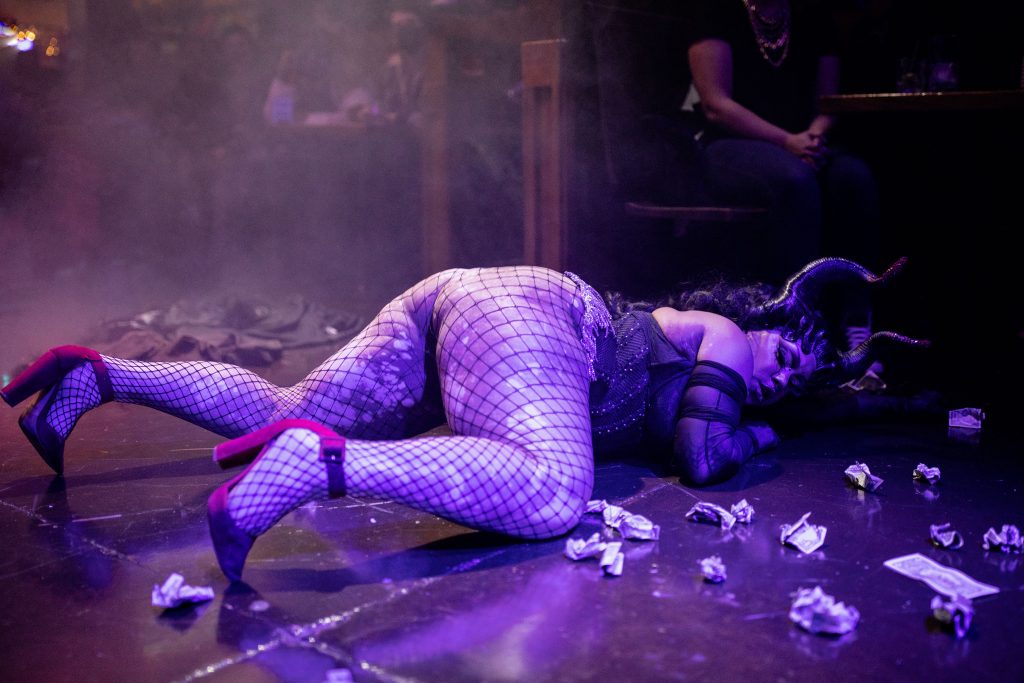
Though I have embraced image-making as a lifelong pursuit, I also recognize that it is a medium with severe limitations. While I am not the first person to point my camera at exotic dancers, stripteasers, and members of the broader sex work community (that encompasses many members of the burlesque community as well), I choose to disrupt the litany of reductive portrayals by incorporating their words, which coexist in the work alongside their portraits. While some feel more comfortable simply posing for an image, others eagerly open up at the opportunity to express themselves through interviews and writing. Each time I work with a “new-to-me” performer, I present the option for them to write a shareable essay, poem, or creative piece that relates to any part of their identity in burlesque. In these confessions lies the connective tissue between my story and theirs. But they also reveal the nuance and complication of performing, of undertaking risks, of temporarily suspending their own disbelief to make a little magic.
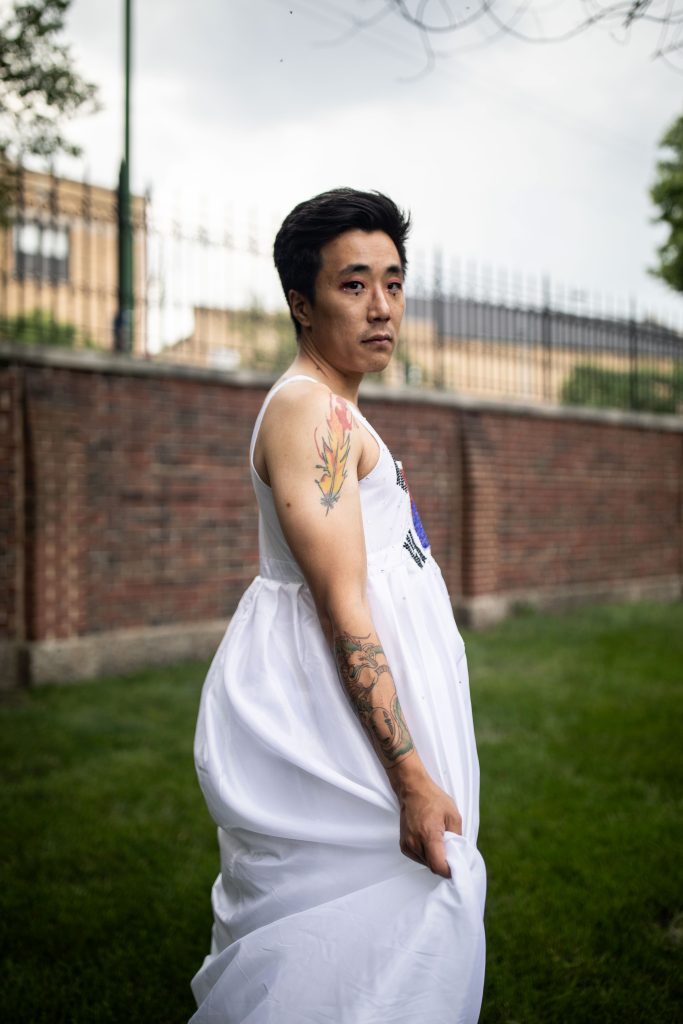
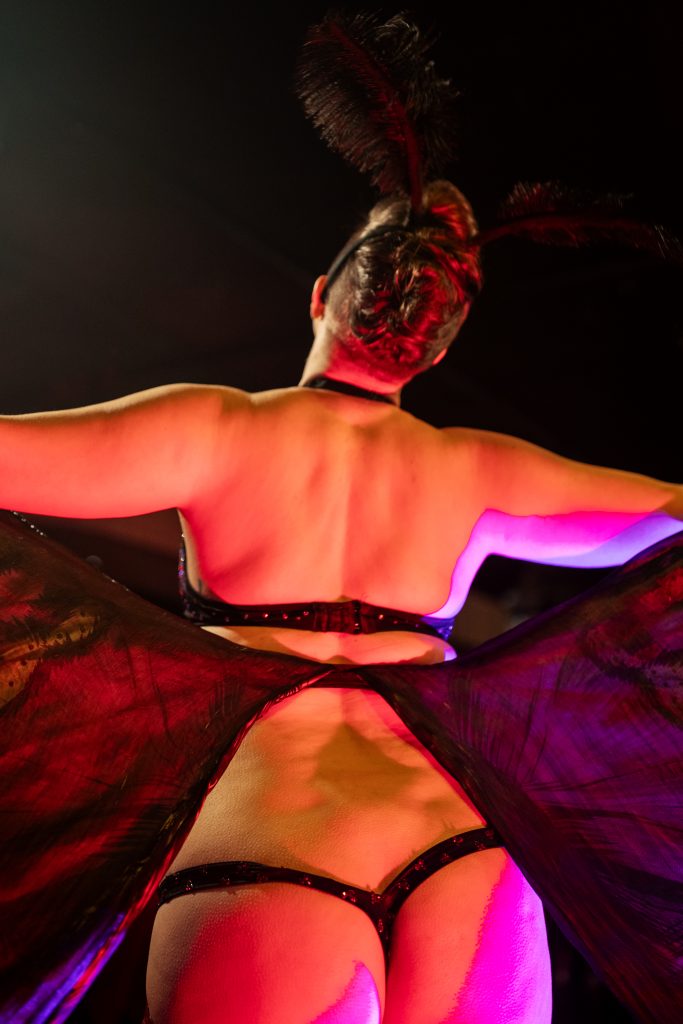
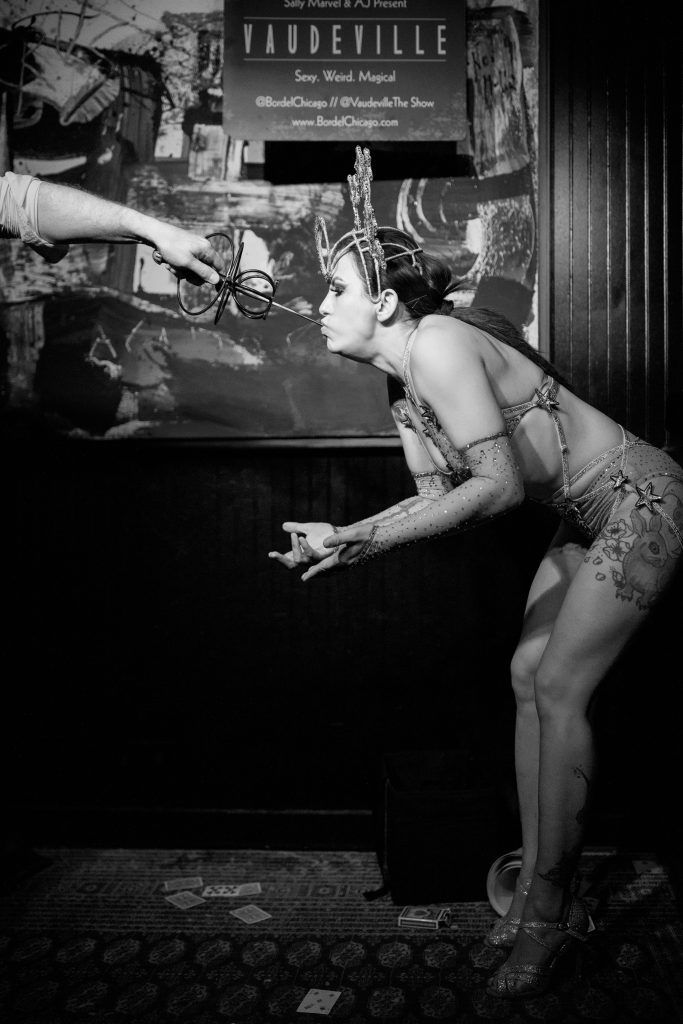
Scantily clad femmes have been an easy target for exploitation and victimization throughout visual history. The advent of photography has escalated this by perpetuating the proliferation of objectifying images, particularly in the internet age. I instead root my photographic work in creative collaboration, hoping to present both complicated and caring views of my peers. Rather than “capturing” them to craft easy narratives, I rely on their participation, expressing their voices and choices.
Sharing ourselves is at the heart of burlesque, whatever version of ourselves seems pertinent to put on stage. Once I stepped outside my comfort zone with Kitty and Secret and reached out to members of the local performance community that I did not know, asking to photograph and collaborate with them, I took the biggest and most important step in my practice. These early collaborators, like performers Tila Von Twirl and Miss Nyxon, supported me through word of mouth in meeting new folks. One encounter inevitably led to another, and since many performers are also producers (or friends with producers), pretty soon I was regularly photographing live shows again, too.
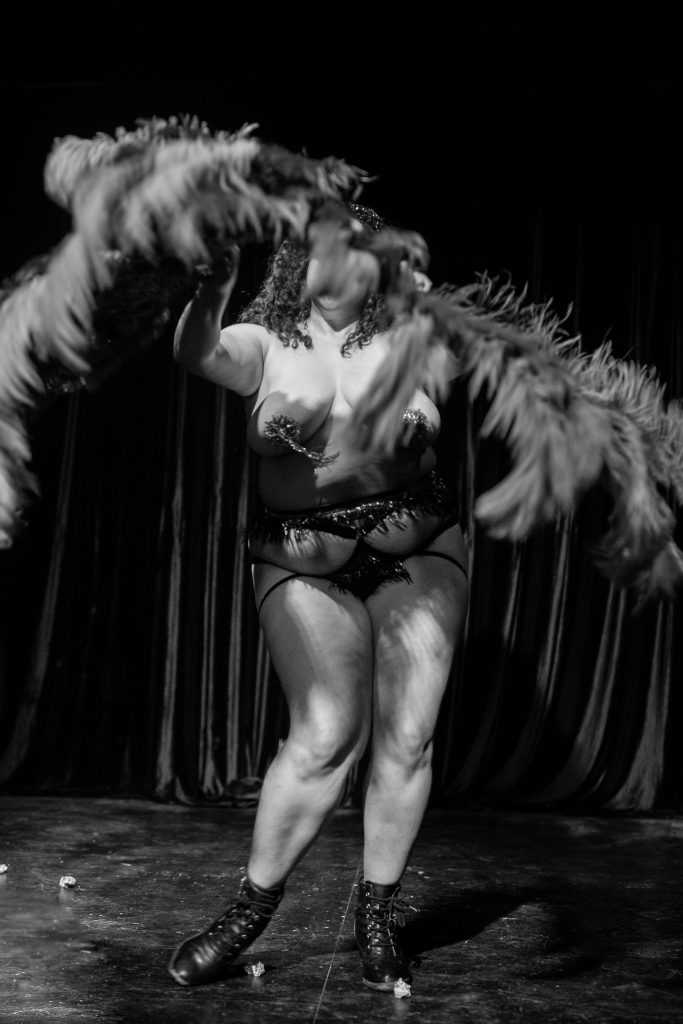
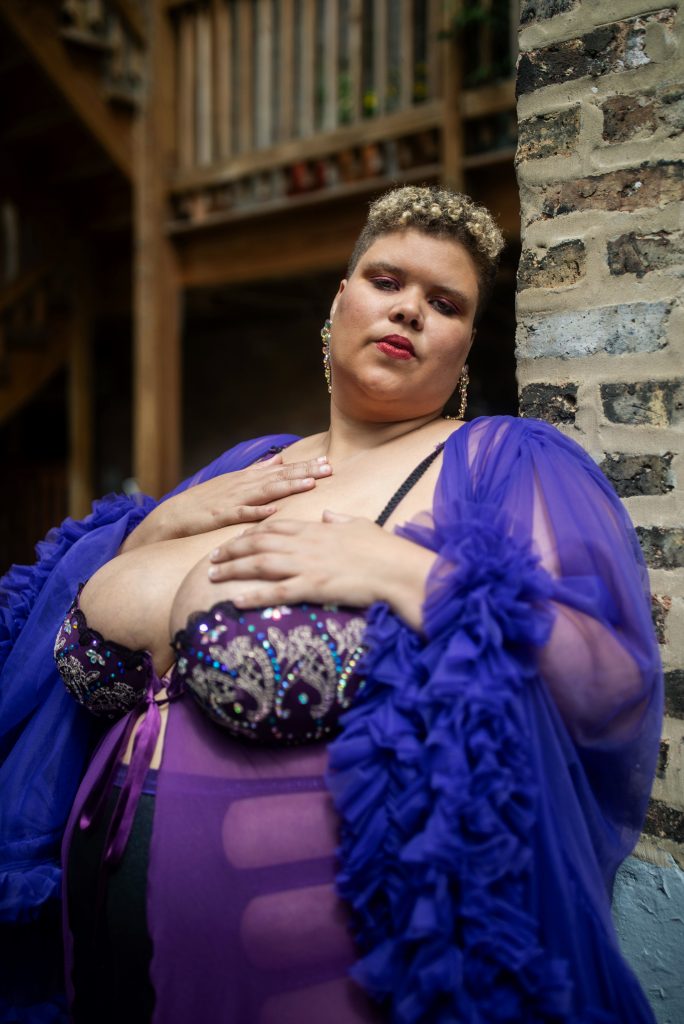
In September of 2022, when Kitty and her partner moved back to Chicago after living one year in Spain / three years out-of-state, she and I co-created and began co-producing our own rock n’ roll-themed burlesque show: Lust for Life. With monthly showcases held at neighborhood lesbian speakeasy Dorothy, Kitty and I quickly became immersed in stage life again—except, unlike during our ensemble days, we were not just performers, but also emcees and bosses. Lust for Life also connected me more closely with performers I had yet to photograph or interview, and thus Show & Tell as a body of work really started to grow.
Though the burlesque community is its own subculture, complete with its own history, etiquette, and traditions, in viewing performers’ depictions and reading their words, we connect with their humanity and perhaps access an unknown world. And not just that. We expand our conceptions and expectations around gender presentation and performance—in and out of persona. We question our own values around expressed sexuality and the sexualized human body.
Ultimately, we found proof that the extraordinary is in all of us, and that by simply viewing, we bear witness.
SHOW & TELL:
Chicago’s burlesque stars reflect on their craft in their own words
KEVLAR B LIGHTNING
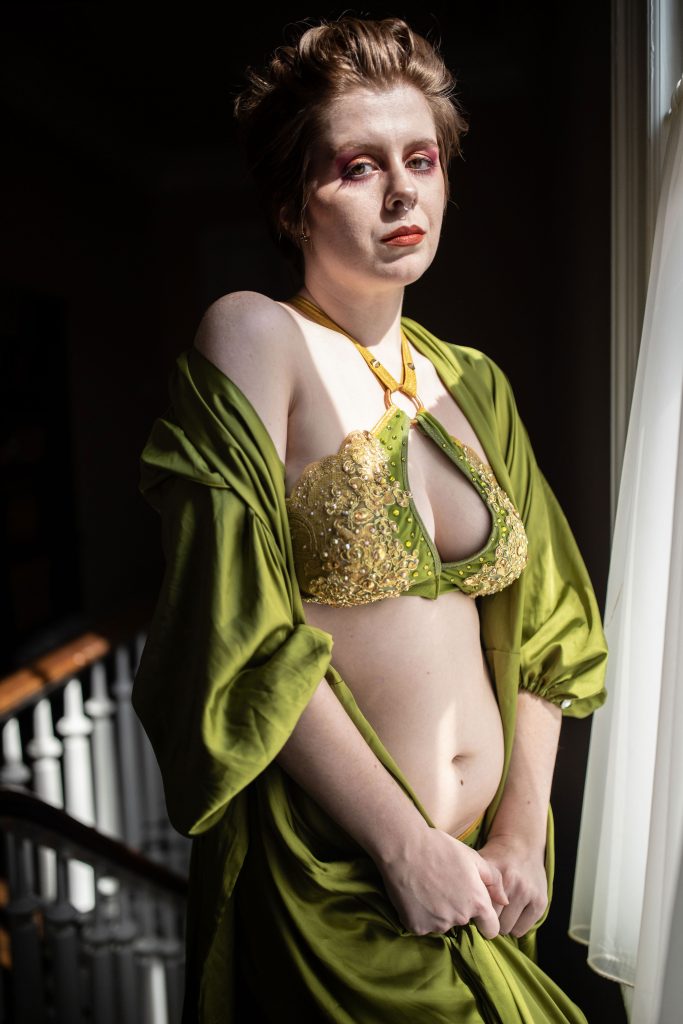
“Living with chronic pain for more of my life than not and in a body that is heavily viewed through a gendered lens is a very rough way to live a life… and at times it has affected how I see myself.
For those brief moments that I’m on stage, I am in charge of how I’m perceived as I fully show up in my body. I inhabit a body that fights me so often, that complicates my life, that has been the center of trauma… and I let so much of that fade into the background, with the rest of the banal.
The one thing I can never escape is my body—its limitations are never too far away. It can still fail me even while dancing, and that is something I have had to learn to work with and not against. These stumbles, slips, and staggers get folded and tucked into what I do. Enough high energy and booty shaking can distract from missing dancer lines and grace.
Burlesque allows me to express just a bit of the sparkle that I hold inside, and the act of performing is one of the strongest forms of mindfulness exercise. As long as I am able to continue this practice, I am going to let the near-perfect perception of me live on.”
TILA VON TWIRL
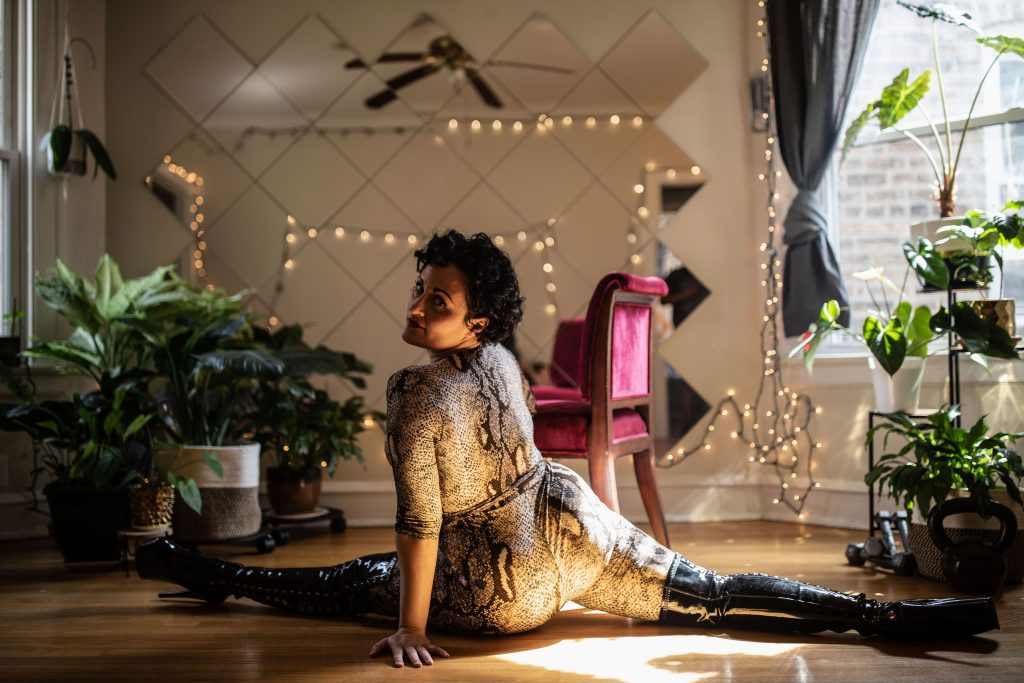
“Burlesque is a blank slate. Anything is possible. Yet oftentimes performers get clumped into, or forced into, a singular category often based on race, bodily ability, size, and gender. Burlesque, or really any artform, is a microcosm of the macro. I think artists, specifically movement artists, have a sacred opportunity to show what is possible—and how we can be healing as whole human beings.
I grew up a dancer and performer, and the historical aspects of this artform have always popped up in my life and practice, beginning with the dinner theater I essentially grew up in. Fun fact: that theater was on the vaudeville circuit in earlier years. Besides growing up in the dance studio that my mother ran, I was probably at, or a part of, theater rehearsals and productions, for most of my formative years.
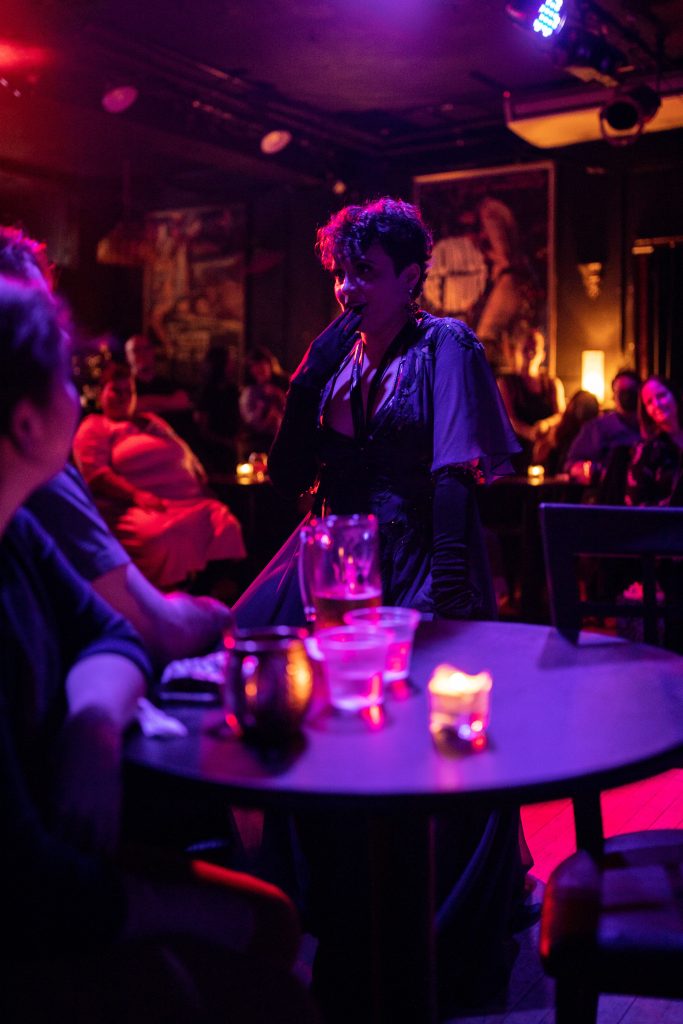
The comedic and taboo nature of the burlesque was awe-inspiring to me as a young person. I recall getting in a lot of trouble after repeating the dirty jokes told in shows. It’s apparent now—I had far from a “normal childhood.” But it was normal to me. Several years later as an adult, watching performers here in Chicago, I noticed something deep within me that craved what I perceived as bodily autonomy, choice, artistic freedom, a deep connection to authentic power, and a reclamation of the feminine. I certainly did not have those words fifteen years ago. Because of burlesque—because of stripping—I have found my people. The weirdos, the others, the queers. I have traveled the world performing, and possibly the greatest gift was meeting my Spouse at a show we were both a part of. I have not only stripped away layers of clothing, but I have also stripped away layers of myself.
Tila Von Twirl is only a part of me, however. An exaggeration. An invitation to explore how I want to be with myself and the Divine nature. My work has looked and been a lot of different things. Absurd, irreverent, gross, fancy. But I am always striving to bring something unexpected, and a performance that feels true to the person I am in the moment.”
MZ MR
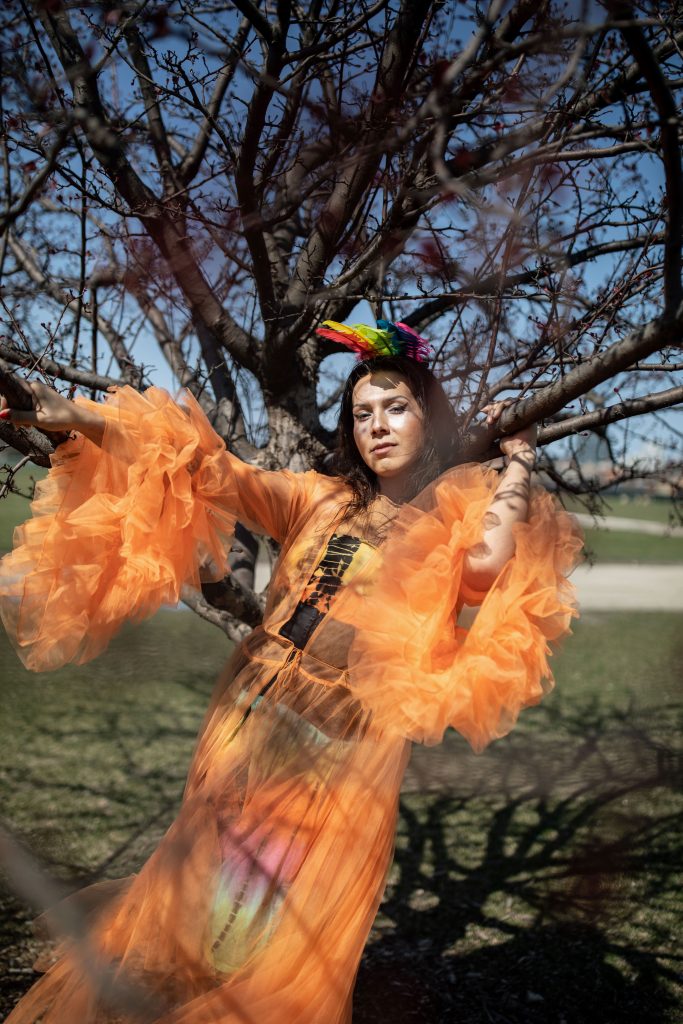
“As an indigenous Two-Spirit trans woman of mixed Tewa and Mexican heritage, the impacts of cis-heteronormative patriarchy have been felt for centuries through the brutal forces of European colonization upon my people and the land we’ve cultivated for generations. Burlesque has been a way for a gurl like me to find acceptance in a world that constantly and continuously tries to eradicate me.
For many years, much of my survival was dependent upon various kinds of sex work, including stripping and escorting. Sex work was one of the only avenues available for me to earn income as I transitioned publicly—at a time when TGNC people were not protected or afforded the small agency that they are afforded today. Burlesque was my livelihood for a decade as a performer, teacher, and costumer.
One motif that has sustained throughout my years as a burlesque artist and mentor is Gender Euphoria—and facilitating environments for myself and others to embody that experience. Now that I work as a daytime professional, my performances are less frequent, and I privately mentor and train emerging burlesque artists when my schedule allows. What I’ve been able to do with burlesque is leverage the strength of the community and my visibility as a performer to continually advocate for QTBIPOC people within all spaces, public and private.”
MATT ADORE
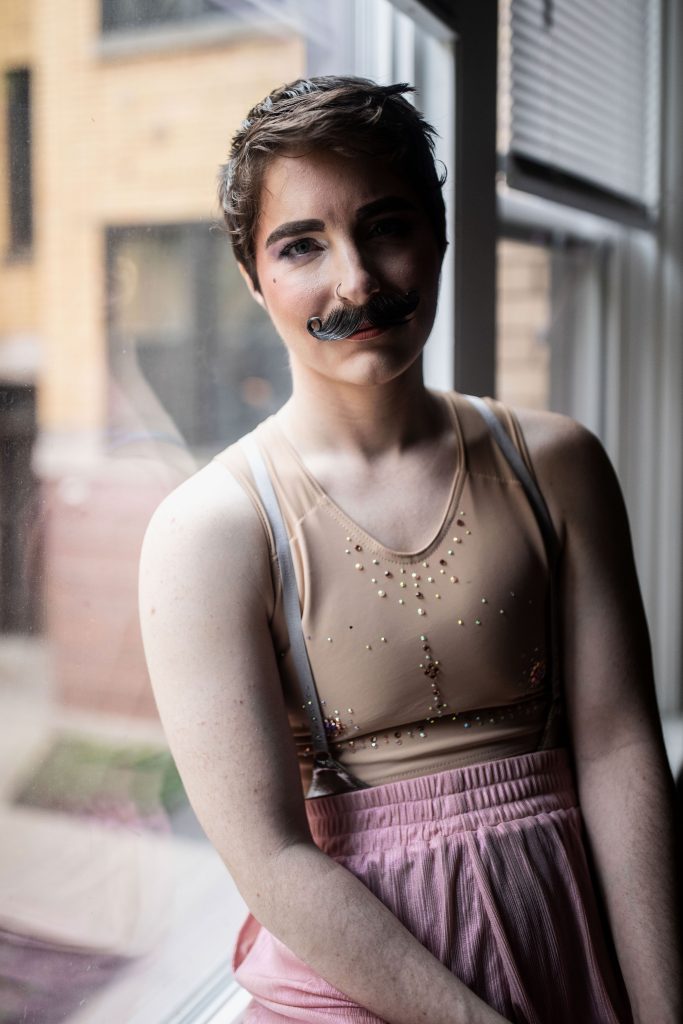
“People are often very surprised to learn that I’m 1) a performer, 2) someone who takes their clothes off for entertainment, 3) while presenting as a man, and 4) sometimes there’s even a bit of circus involved. If I tell them, and I watch their eyes, I can almost see them unpacking those layers in real time.
I find that folks who aren’t already in the burlesque or drag communities have a lot of questions about my performance life. Sometimes people will ask to see pictures because they want to know what Matt Adore looks like, because there’s fascination in seeing someone present as another gender. Sometimes they can’t quite imagine how these performance genres fit together, especially if they haven’t seen a burlesque or a drag show before. Bizarrely, some people struggle to conceptualize what drag kings are, even if they’re already familiar with drag queens. [Eyeroll] Depending on who I’m talking to, sometimes there’s a fair bit of educating I take on before they really understand.
Even though I’ve “come out” as Matt Adore in civilian spaces many times over the years and I’m very open about this part of my life, it still feels incredibly vulnerable letting new people in on what I do. I wouldn’t say it makes me uncomfortable per se. But oftentimes a casual question about my weekend plans suddenly leads to an excavation of a whole other side of myself for relative strangers. It feels like a lot to put out there all at once. Like, ‘Oh, hello new person. I don’t really know you, but here’s this very big, very important, very precious part of my life that you may or may not understand or appreciate. And also, some bangin’ pictures of my butt. Do with all that what you will.’
Sometimes people are just surprised that I perform, because I’m overall a fairly shy, quiet, non-confrontational person in my day-to-day life and have more than my fair share of social anxieties. They can’t reconcile who I am off-stage with who I am on-stage; that all of it comes from the same person. People expect performers to exude confidence, but that’s something I struggle with off-stage. I suspect that’s also true of most burlesque performers. For all the confidence, grace, and grandness we project onstage, a lot of us are secretly awkward turtles in most other contexts. Our stage personas are just our superpowers that activate when we’re wearing G-strings.”
MISS NYXON
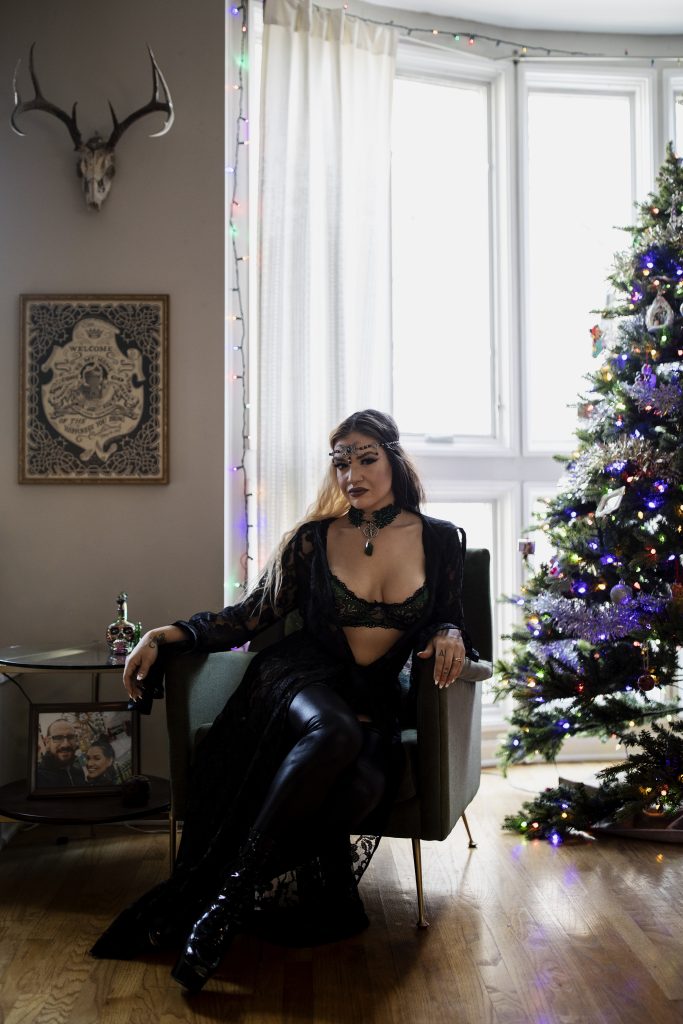
“I grew up in the professional wrestling industry as a member of the dynasty Los Guerreros. We are an extremely disciplined and prideful family because of our tough upbringing by Grandpa Gory Guerrero (a famous wrestler and promoter in Mexico), as well as my father who was a multi-title holding champion in the ring and of the Latino people. Along with that love and pride I have for my family, their steep expectations challenge me… Better put, to ‘be the Guerrero that we need you to be and to uphold family pride and respect.’
When I did wrestle in the developmental territories of WWE, I discovered that my passion for it did not mirror what my mother and father brought to the ring. But I loved living in a character and bringing that character to life. And I wondered if there was a “respectable” place in which I could honor my roots in ways that empowered me.
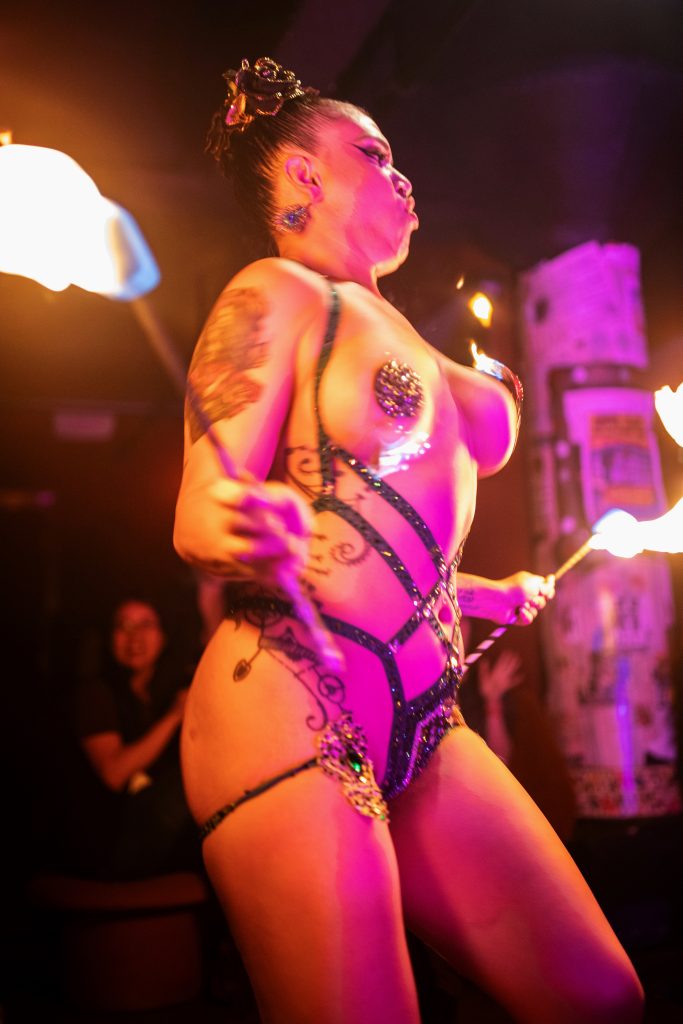
Sex work is not something that is accepted in my family. It’s seen as a degrading and inappropriate career choice for a Guerrero. Many people in the family—and even wrestling industry legends—have made that very clear. The pressures of living up to our family name—always striving toward excellence and maintaining the traditional patriarchal foundation we’ve built… I have received media backlash regarding how disappointed my late father would be in my choices.
I receive hate and harassment often. And as wonderful as my father was, and as much as I want to believe he would eventually understand and root for my choices, I can never be sure he is indeed proud of me, especially as a very religious man. I idolize my father in many ways, and he is still and forever will be a huge inspiration to me. I hope he can look down at me and see that this work gives me joy and acceptance of a body I have battled with since six years old, along with a community that inspires me and lifts each other up. And I hope he sees the talent and artistry I bring to the stage. No, it’s not a wrestling ring but it’s my home—my safe place—just like the ring is for Guerreros.
My tag line “Latina Heat,” announced at each of my shows, is my father’s that he used for his ring entrances… that is how I honor him, along with leaving everything out on the stage and not holding back. I am aggressive and deep on stage as he was in the ring.”
LADY GINGER
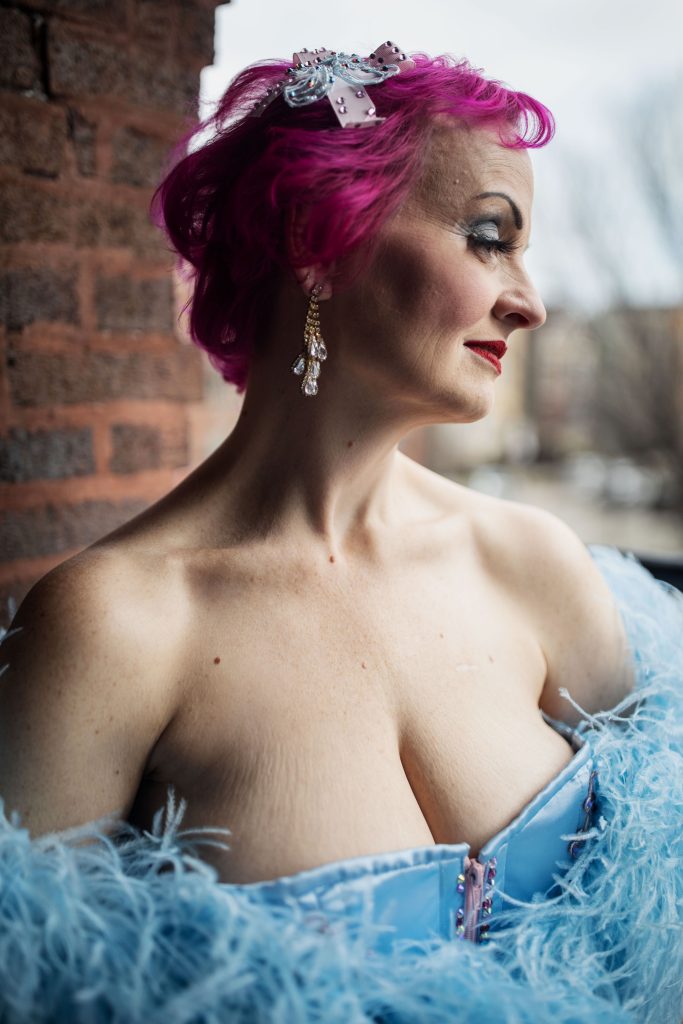
“When I started performing burlesque, I was in my prime. I was in my mid-30’s. I had just finished running a marathon after a bad break-up. I was in the process of figuring out who I was and what I liked to do as a single person. I was also feeling not-so attractive because at that time, my partner and I weren’t intimate anymore.
Burlesque gave me a lot of things… but one of the things I really needed was an appreciation for my body—not just what I could do with it, but to be honest, [I needed to appreciate] how it looked.
When I put on these costumes and a crowd is cheering, I love my body. I feel strong. I feel sexy. I’m 53 now and am in my 16th year of performing. I’ve been proud to grow old as a performer… like, I can get an audience half my age to cheer for this old lady! (Guess I’m not so old after all!) Burlesque definitely keeps me young… during the performance.
But, before the performance, I’m hypercritical, worried my stomach is pooching over my underwear, worried my boobs are too saggy, worried the audience will scrutinize me. With all the wrinkles and lines, I wonder what anyone could possibly see in a face like mine amongst so much youth.
After a show, I dwell on what went wrong… did I remember to suck my tummy in? Did I do an okay job “keeping up?” But again, when I’m actually performing, I feel not just acceptable, but good in my own skin. I’m truly not sure who or what I would be these days without those moments on stage.”
You can find more portraits from the Show & Tell series (2021-ongoing) on McKeehen’s website.
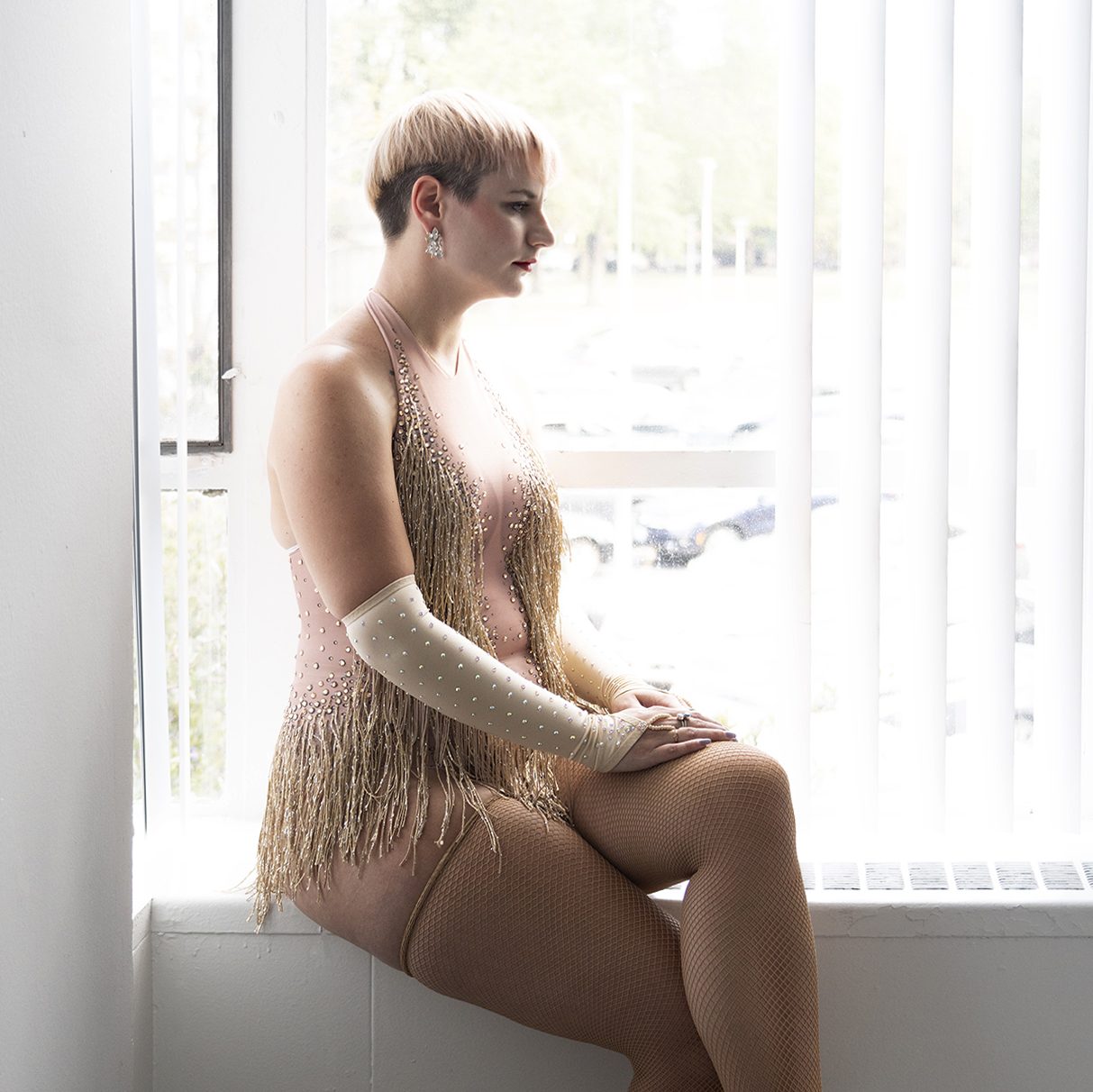
About the author: Erica Nicole McKeehen (b. 1987, Bucyrus, OH) is a Chicago-based artist, performer, arts manager, and educator raised on grunge rock and Coca-Cola. She currently lives (with her two senior Siamese boys, Levy and Theo) and works in Chicago, IL.
McKeehen creates self-portraits and photographs and interviews fellow sex workers and burlesque entertainers. She is most interested in collaborative documentary practices that expand photographer and sitter relationships. She is also concerned with construction of identity, visibility/representation, and performativity expressed through portraiture, along with the history, evolution, and iconography of pin-ups.
McKeehen received her BS from Ohio University ‘10, and her MA ‘21 and MFA ‘23, both from Columbia College Chicago where she received the Stuart Abelson Graduate Research Fellowship, the Albert P. Weisman Award, the John Mulvany and Bob Thall Scholarship in Photography, the Fogelson Foundation Photography Scholarship, and the Anderson Ranch Award.
She models, performs, and produces local burlesque under the moniker Greta-X.
